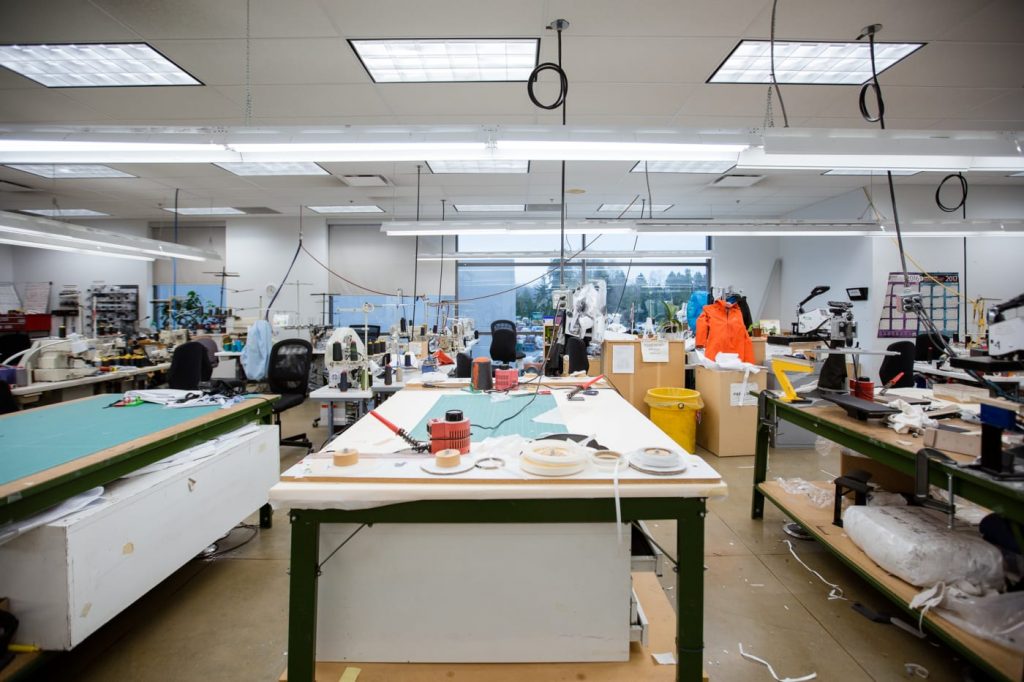
Photo: Courtesy of Arc’teryx
Emilie Pellerin spent last November in a small market town called Shigu, situated in the remote foothills of the Himalayas in China.
While less than 50 miles northwest of one of the country’s most popular tourist destinations, the Old Town of Lijiang, Shigu is quite secluded. But it’s also a rock climber’s Shangri-la, with its mossy limestone cliffs positioned just so above a 180-degree curve in the Yangtze River. And that is what brought Pellerin here.
Pellerin is a professional climber who has broken all sorts of records, both in her hometown of Montréal, Québec and worldwide. Three years ago, she was recruited by high-end clothing and sporting goods company Arc’teryx to serve as one of its athletes. So she arrived in Shigu in an official capacity: to put some of the retailer’s not-yet-released climbing harnesses to the test.
“Each side of the harness was built differently so we could see what worked and what didn’t,” says Pellerin. “One side was great and it felt like it was going to hold forever. The other was really good at first, but the second you started climbing, it would start to get mushy.”
Pellerin spends the majority of her time on the road, often while testing Arc’teryx items still in product development. As a climber, that includes technical gear like harnesses as well as chalk bags, backpacks and alpine shoes. But her field testing duties also extend into outdoor apparel you, too, may wear in your everyday athleticism, like synthetic hoodies or Gore-Tex rain jackets.
Arc’teryx has 73 ambassadors in total; Pellerin is one of 30 climbers in the group. These athlete programs are not uncommon among outdoor retailers, if only because it’s imperative that its products perform at a level at which is appropriate for its full range of customers, from women in Brooklyn dressing for a Prospect Park stroll to full-time athletes like Pellerin.
As performance sportswear scoops up more retail market share, field testing is becoming an even more imperative step in the outdoor recreation brands’ research and design process.
The practice has its roots in post-World War II consumerism, when swelling public spending power intersected with a simultaneously growing demand for technical apparel. By the mid-1970s, a bevy of increasingly technical material innovations — like the aforementioned Gore-Tex — became the subject of growing calls to confirm high performance claims.
In 1979, veteran outdoorsman Ken Ledward founded Ken Ledward Equipment Testing Services (KLETS), which coordinates field testing between manufacturers and real-life athletes who can expose garments to some of the most extreme conditions on Earth. Per KLETS methodology, items under evaluation are to be worn for a minimum of 200 hours. And that’s just in the first testing stage alone.
Twenty-first-century field testing guidelines don’t stray too widely from those that Ledward established four decades ago. Though today, product development often begins with the athletes themselves, rather than being brought in as a quality-control touchpoint before the item is brought to market.
Of course, those athletes include the official ambassadors who have inked lucrative apparel contracts with the brands themselves. But many retailers also partner with more “grassroots” individuals on a regional basis. (REI will even recruit anonymous “field agents” of varying skill levels to test apparel and gear — and get paid.)
In addition to its more than 100 athletes on its global team, Denver-based outdoor recreation company The North Face works with the likes of local and national run clubs, climbing gyms and ski-industry employees. Testers, whatever their affiliation, will often participate in the design concept several full years before the final version goes to market, providing multiple cycles of feedback along the way.
“Testing begins with a problem statement: What is this product intended to do, where is it going to be used and who is going to be using it? Testers are recruited based on this use-case,” explains Ryan Wesson, wear test analyst for The North Face’s Mountain Sports apparel team.
From here, a prototype will be sent to the testers themselves — Pellerin estimates she receives one new product a month from Arc’teryx, to maximize its wear — who then provide real-time feedback to analysts within the design and materials teams.
Pellerin tests samples throughout all steps of production, including those in the earliest of stages of material development. Sometimes, she says, she’ll be sent products split down the middle with two types of fabric to visibly determine which side is more durable than the other.